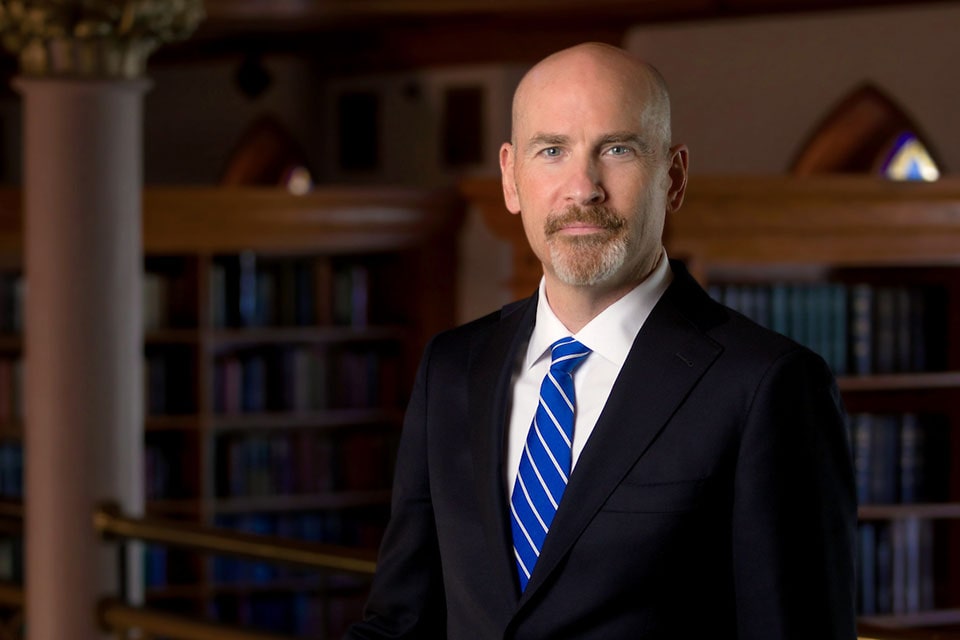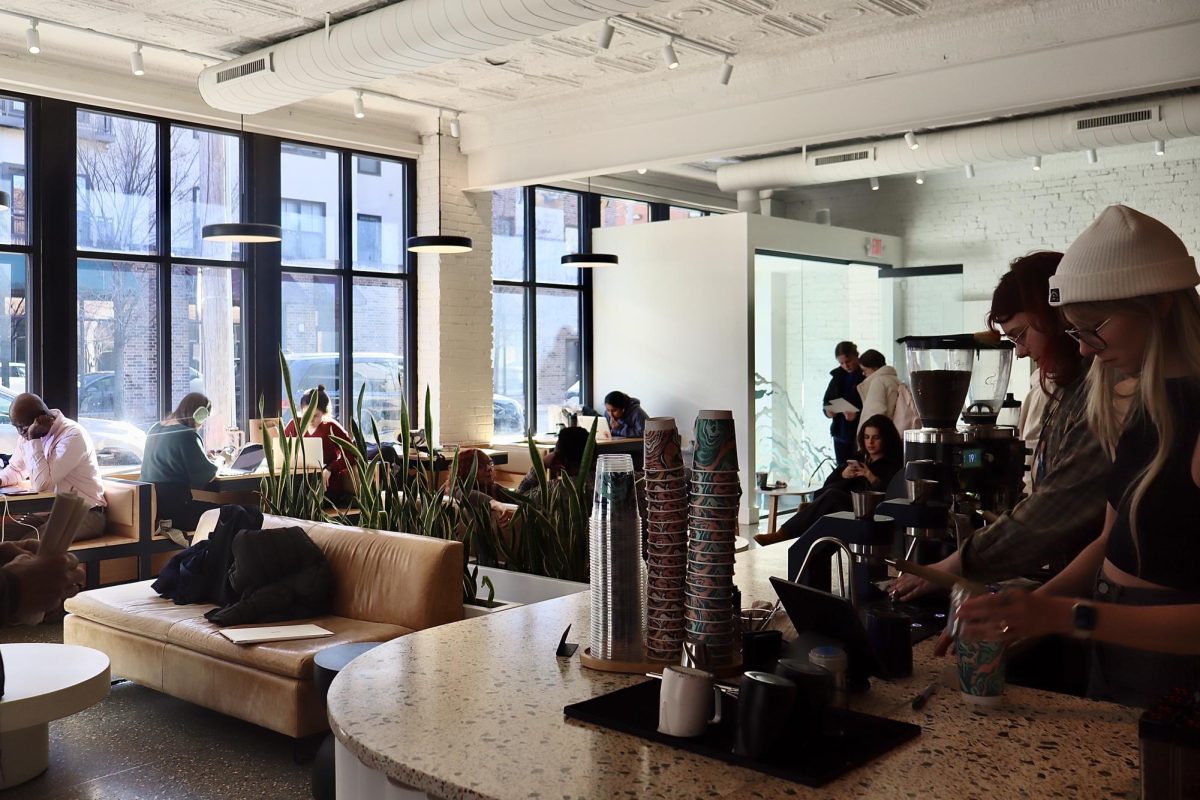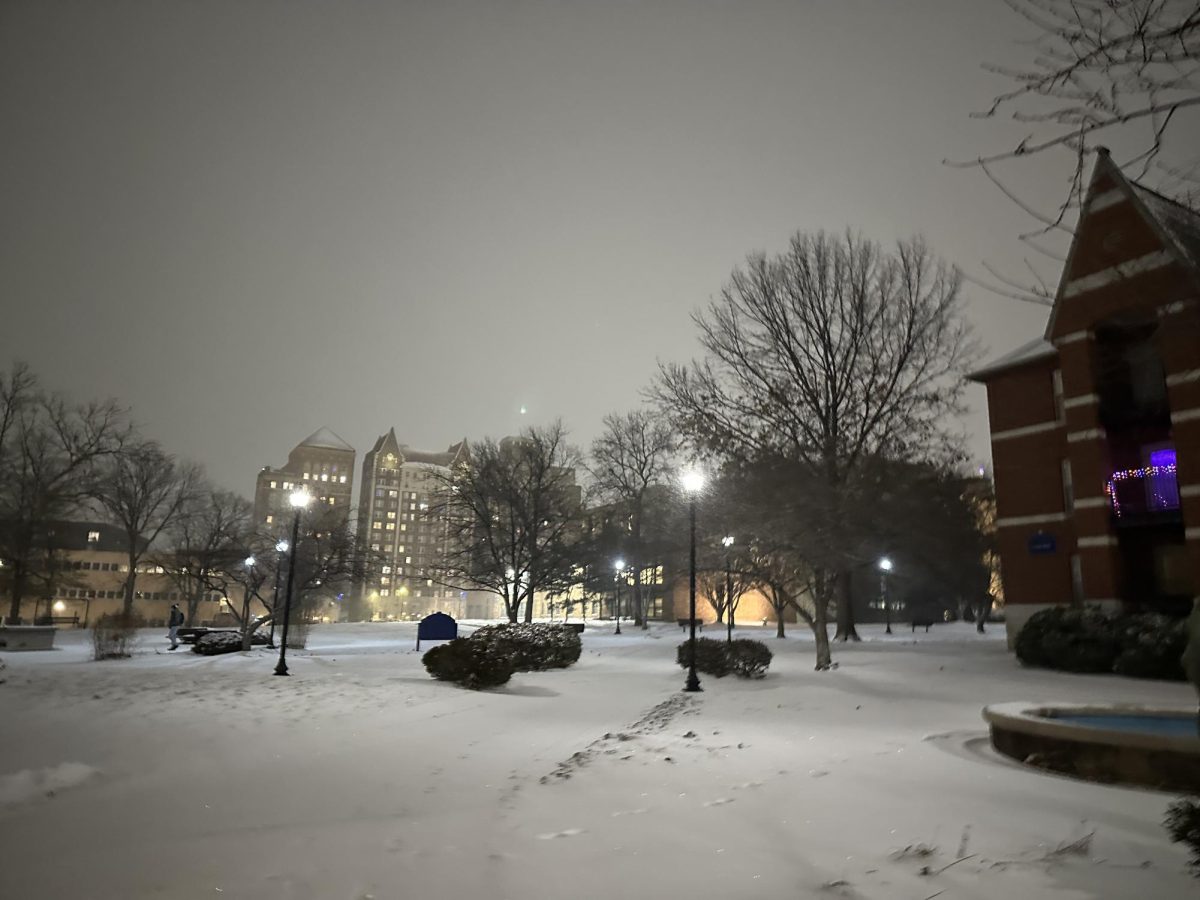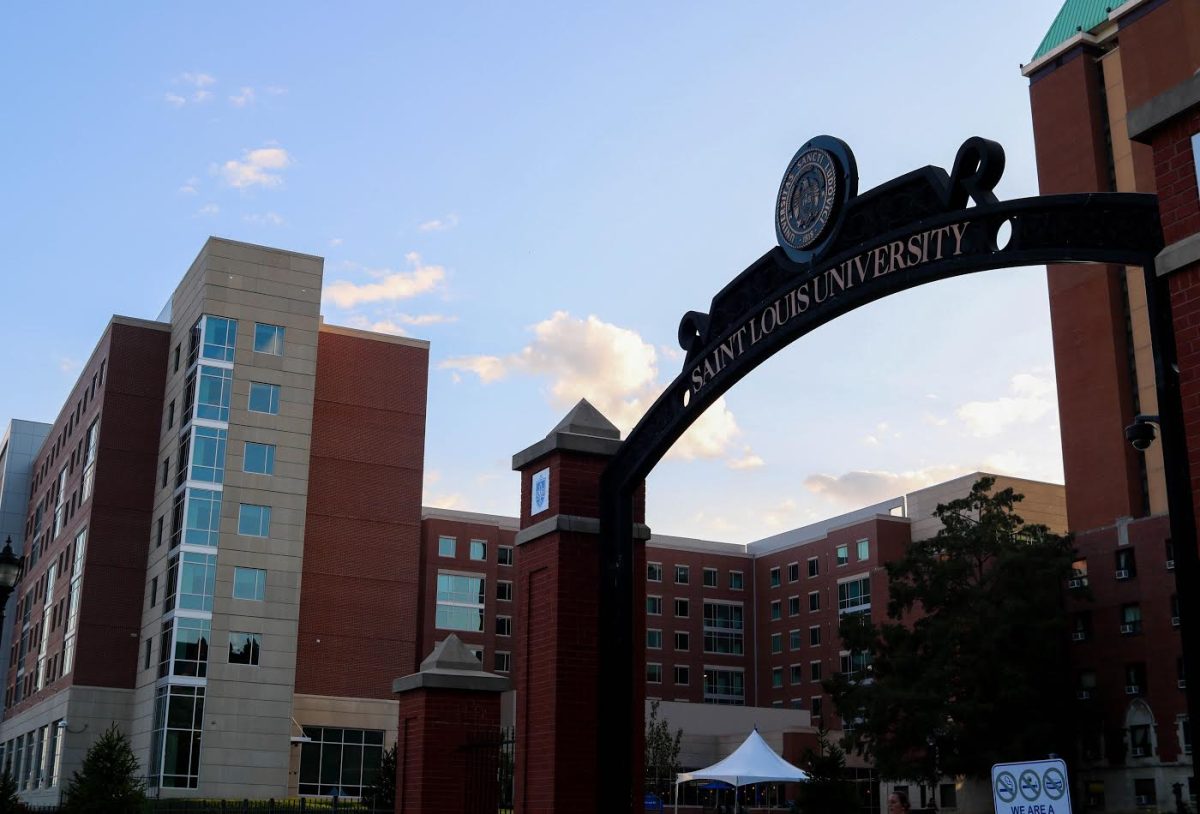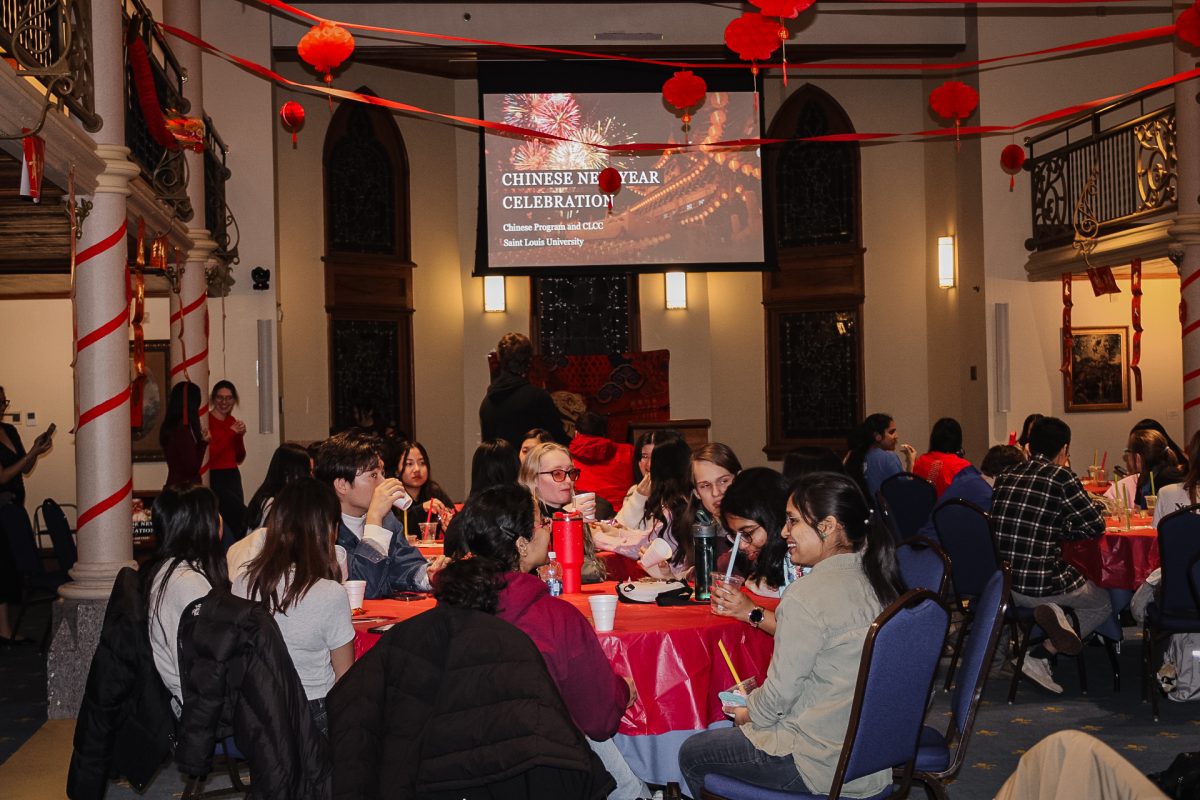Student Government Association has tried to keep it real this year.
“We want to make progress, but we are real about it,” SGA President Sam Howard said.
At the beginning of the year, SGA declared the main goals they wanted to accomplish for the 2008-2009 academic year. As previously stated in The University News, SGA had six initiatives: improving Pius Library, enhancing on-campus dining, initiating a special project funding system, broadcasting all SGA meetings, heightening SLU traditions with the new arena, creating a more environmentally-friendly campus and expanding leadership opportunities.
Howard said that the Executive Board took on these projects with organization and motivational drive, but realized during the year that they had to be more realistic about their goals in order to be successful.
“[SGA] accomplished little things that students wouldn’t always recognize,” said Academic Vice President Sam Morr.
Morr also said the Executive Board has grown to work well together.
Howard agreed, saying that it has become a support system within itself.
“Being normal students has helped us,” Howard said. “It’s easy to get caught up in everything I have to do, but I have to remember I’m in college.”
Other members of the Executive Board agree with Howard, claiming that they have brought a comfortable approach to an organization known for its stuffiness.
“We didn’t want people to think of [SGA] as a members-only club,” said Michael Harriss, administrative vice president and next year’s president-elect. “We’ve opened our doors more this year.”
In general, Howard thinks students will remember this year as “fun” and “a little bit more personable.”
She hopes her legacy includes being a president who not only listened to what students wanted, but a president who didn’t forget to be a student.
She wants to be remembered as a president who had a genuine connection with students and offered realistic goals that were in touch with their needs.
Improving Pius Library
With the main focus of making the library available for studying 24 hours a day, SGA and the 24-hour Library Task Force wanted to make “some simple fixes,” according to Adnan Hussain, chair of the Library Task Force.
So far, the library hours have been extended in order for the entire building to be open until 2 a.m. Café Libros hours have also been extended for students to be able to grab coffee or a snack without wondering too far from their study space.
The hours are currently 7:30 a.m. to 9 p.m.
According to the Library Task Force, there are still issues that the 24-hour library committee and SGA need to discuss with SLU administrators.
For example, there are outlets in the library that do not work.
Some outlets are not fit for three prong plugs, which are used for extension cords for some computers.
“I took it on myself with the help of library task forcers,” said Hussain. “[We] started from zero.”
The most recent news on a 24-hour library involves an $8,000 swipe card access system that was approved by University administrators on March 17 said was a big step toward a 24-hour library. The Library Task Force is hopeful for a 24-hour library during finals week this semester.
Enhancing On-Campus Dining
“I was abnormally interested in on-campus dining,” said Andrew Miller, chair of SGA’s food services committee.
Chartwells has added certified chefs in residence hall cafeterias.
By being able to create a better caliber of food and recipes, Chartwells is able to calculate nutrition facts for these dining halls. They have added the nutrition facts to dining halls and to their new website.
Miller has worked closely with Chartwells throughout the year to get these nutrition updates added.
“The priority was put on residence halls,” Miller said.
According to Miller, Chartewells was also concerned with food waste, which they attempted to combat by removing trays, which he said both conserves water used to wash them and motivates students to grab smaller portions.
Another goal was to create Federal Work Study jobs at Chartwells outposts. Ideally the positions would have down time which would allow students to do homework. However, this plan fell through. The funding has to be completed between SLU and the federal work program, which is out of SGA’s control.
Miller is very optimistic about the possibility of increasing jobs for SLU students through Chafietz Arena, however.
“[There is] definitely interest on the Chartwells end to have more student workers,” Miller said.
In addition, Miller is working to make Chartwells more eco-friendly.
The only item in the Busch Student Center that is not currently recyclable is the bag for bagels at Au Ban Pain. Miller said Chartwells is working with the ABP corporation to replace it with recyclable bags.
Initiating Special Projects Funding
SGA Financial Vice President Jonathan Perdue and the finance committee are in the process of creating a new type of funding from SGA that is not for Chartered Student Organizations, but instead caters to the wants of individuals or informal student groups.
The idea behind this is that “every student pays a student activity fee and every student should have access to that,” Perdue said.
According to Perdue, CSOs come first, but other students who can benefit the SLU community as a whole should be able to access student activity money.
After annual group funding has been settled for next year, Perdue and the finance committee will be able to finalize their plan to allow students outside of CSOs to apply for funding.
Broadcasting SGA Meetings
Currently Senate meetings are taped on Wednesday nights, posted online and played at Salsarita’s on Friday nights, according to Howard. SLU-TV does not have the technological capabilities to produce a live feed on Wednesday night.
SLU Traditions
Under the Howard administration, the Cannonballers were created. The group helps decide on and support key campus traditions, and was intended for just this year.
The ideal purpose was to highlight already-established traditions, but the Cannonballers are also responsible for the Billiken Spotlight, a light that shines onto Griesedieck Tower during high-profile events. Howard said that SGA is trying gain funding for the Billiken Spotlight to stay on campus for every event.
In addition, SGA will survey the student body at the end of each academic year in hopes of learning what students feel are SLU traditions. Then, the Executive Board-elect and senators will implant those traditions, hopefully creating a culture of change that will carry on throughout the years.
“Going Green”
“[University President Lawrence Biondi, S.J.,] has approved a University-wide sustainability core vision team,” Howard said.
The vision team is a long-term committee that will oversee various green issues on campus.
Howard said that her administration did not realize the task of creating a more environmentally-friendly campus would be as difficult as it proved to be.
“We thought it was as simple as gathering information and making recommendations,” said Howard, calling the tasks an “ongoing process.”
Expanding Leadership Opportunities
At the beginning of the year, Joyce conducted the second annual Leaders of the Pack conference.
This year, the conference was held on campus due to “limited resources,” Joyce said.
Even with the limited resources, Joyce felt it was successful.
“SGA as a whole, outside of the chambers we get more done,” Joyce said.
Joyce also brought back the Spring Involvement Fair. Although the fair was not as big as the one in the fall, it brought in more than 50 students, and was open to departments-a feature that was new.
The goal of the fair was to allow students to gain knowledge on how to lead, increase membership of CSOs and create more retention for those CSOs.
Joyce said he felt as though students-freshmen in particular-get settled in the first semester and are more ready in the spring to join an organization. Because of this, he wanted resources to be available for those students.




